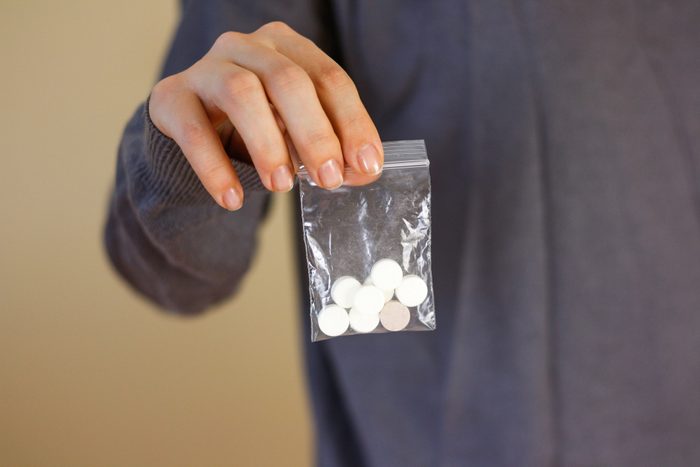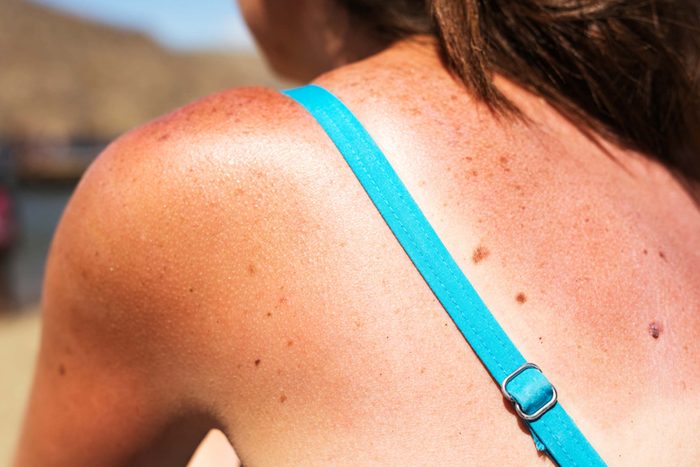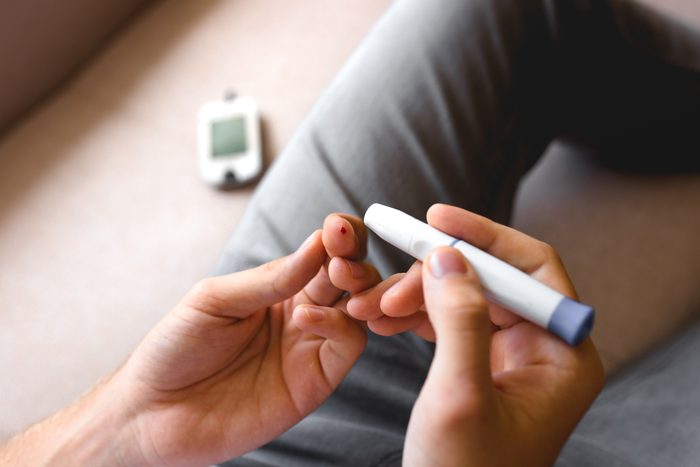
Enjoying summer
With warm sun and long days, who doesn’t love summer? But potential diabetes complications stem from common summertime problems like sunburn and dehydration. Of course, you can still enjoy the sunshine and fun; just be prepared. Here’s what to watch out for in summer when you have diabetes.

Nerve damage
The typical type 2 diabetes complications—think high blood pressure and increased risk of heart disease—get worse in the heat of summer and that means that your exercise performance may suffer. “The summer season and heat and humidity go hand-in-hand, which can cause complications for people who have diabetes for several reasons,” says Maria Subang, MD, a Kaiser Permanente Colorado endocrinologist. For example, 60 to 70 percent of Americans with diabetes have nerve damage that can affect multiple organs in the body, including sweat glands, which help naturally cool our body. “The inability to stay cool can lead to heat exhaustion and heat stroke, which is a medical emergency,” says Dr. Subang.

Dehydration
First, people with diabetes should take note that getting enough fluids is a huge concern. Now add in hot summer days and you could be looking at higher glucose levels, which can mean more trips to the bathroom to pee, causing dehydration. “High blood sugars increase the risk of dehydration, so it is especially important to keep well-hydrated,” says Sarah Rettinger, MD, board-certified endocrinologist at Providence Saint John’s Health Center in Santa Monica. Sipping iced tea, sugary sodas, or booze can give you the false impression you’re drinking plenty because you’re not thirsty, but beverages with caffeine, alcohol, or sugar can be dehydrating and impact blood sugar levels. “Dehydration can further tax the body and lead to even higher blood sugars, creating a vicious cycle.” Make sure you take in your electrolytes, not just water. When you sweat, you lose both water and electrolytes. It’s important to replace both water and salt by drinking Pedialyte or sugar-free sports drinks. If your urine is a dark yellow, or you’re feeling sluggish or dizzy, you could be dehydrated.

Sweat
“Don’t forget about heat and humidity. The combination can be dangerous,” warns Paris Roach, MD, endocrinologist at Indiana University Health. “There is some evidence that people with diabetes may not sense heat as well and may not sweat as effectively compared to people without diabetes.” Sweat cools in two ways: The moisture on skin can lower temps and, as the moisture evaporates, it cools you further. “People with diabetes need to take extra precautions against overheating and dehydration,” says Dr. Roach. Before heading out for a day in the sun, check the heat index—which rates “how it really feels” when relative humidity is factored in. If you’re out in the sun, the heat index could be 15 degrees higher than the actual temperature. Follow Dr. Subang’s rule of thumb: “If your shadow is shorter than you are, seek shade.”

Hypoglycemia
Always be prepared by carrying fast-acting glucose tablets or gels and mastering these tricks to manage low blood sugar. You might think it’s normal to be sweating through your shirt, but if you have diabetes, it signals danger. “The tricky aspect of hypoglycemia in warm or hot environments is that the sweating that occurs as an early warning sign of hypoglycemia may be interpreted as normal sweating due to heat and activity, and this may in turn lead to the lack of recognition of hypoglycemia,” says Dr. Roach. Usually, you feel a little shaky and sweaty before hypoglycemia becomes serious. If you’re in doubt, check your blood sugar levels.

Sunburn
You’ve likely made the mistake of not preparing for the sun’s harmful rays and ended up with a painful sunburn, but you may not know that sunburn can actually raise blood sugar levels and lead to possible diabetes complications. “Sunburn can lead to ‘physiologic stress’ or stress to the body,”says Dr. Roach. Sunburn isn’t the only source of this type of physiological stress: Any significant illness—like the flu—or injury can make managing your blood sugar levels more difficult. Work out a plan with your doctor in the event you get a sunburn (or any other illness or injury).
The elements of such a plan are often referred to as “sick day rules.” They include making sure you keep healthy foods, medicine, and a thermometer on hand and that you weigh yourself, test your blood sugar, and check your temperature often, according to the Centers for Disease Control and Prevention (CDC). (Here are our favorite simple tricks for living well with diabetes.)

Going barefoot
Due to impaired circulation, people with diabetes know they must take extra care to keep their feet healthy. That’s especially important in summer when it’s tempting to toss your shoes aside and feel the grass between your toes or the beach sand on your soles. Resist, warns Dr. Subang: “Diabetes can severely damage the nerve endings in your feet, meaning you may not be able to feel the extreme heat coming off the pavement or sand,” she says. “This can lead to badly burnt feet and a whole host of other complications from those burns. It is best to wear socks and shoes or sandals, whenever possible.” If you decide to go without shoes, be sure to check your feet after your activity. Even a small cut or injury can result in a serious infection or ulcer when you have diabetes.

Diuretics
Some medications—blood pressure drugs, for example—act as diuretics, causing more trips to the bathroom. “People who take certain types of blood pressure medications will need to talk to their care provider for guidance on how much they can drink, as too much liquid can lead to electrolyte problems,” says Dr. Roach. There are some natural ways to lower high blood pressure. Check with your doc first and see if they could work for you.

Injection sites
“It’s important to choose injection sites wisely during the summer,” says Magdalena Szkudlinska, MD, an endocrinologist specializing in diabetes and thyroid disorders at Pacific Medical Centers in Seattle. “Heat causes blood vessels to increase in size and insulin may be absorbed faster. This can put an individual with diabetes at risk of having low blood sugar,” says Dr. Szkudlinska. Avoid sweaty and sun-exposed areas that could lead to diabetes complications. Don’t be tempted to cool things off faster by using ice packs. “It is best to go inside and cool off for 15 to 20 minutes before injecting,” advises Dr. Szkudlinska. Test strips, meters, and insulin should all be kept from high temperatures. Use a small cooler or insulated lunch box to keep insulin cool. “When outside the home, insulin should be kept at a temperature no higher than 86 degrees Fahrenheit.”

Vacation
As much as you would like to take a vacation from your condition, you may have to actually be more vigilant about managing diabetes while on break in the summer. Scorching temps can change how your body uses insulin, leading to potential diabetes complications. “Blood glucose monitoring should occur more frequently during outdoor activities in warm weather to spot trends before extreme high or low blood sugar levels occur,” advises Dr. Roach. You may need to adjust your insulin dosage as well as what you are eating and drinking.
Next up: These are the nine diabetes myths you can safely ignore.

